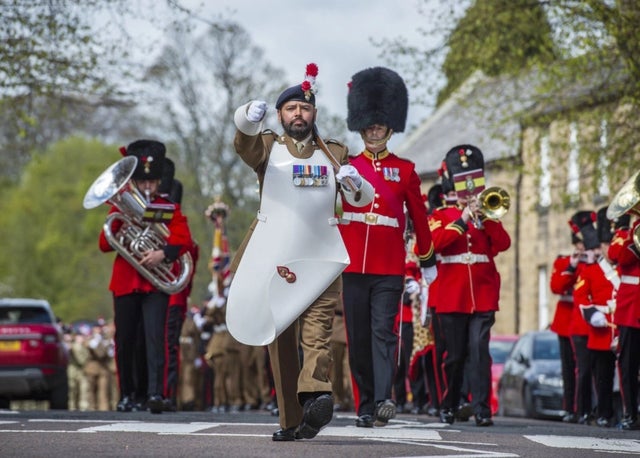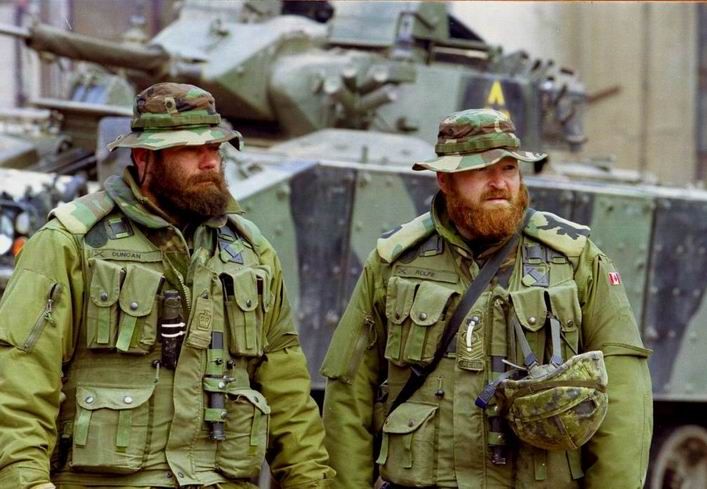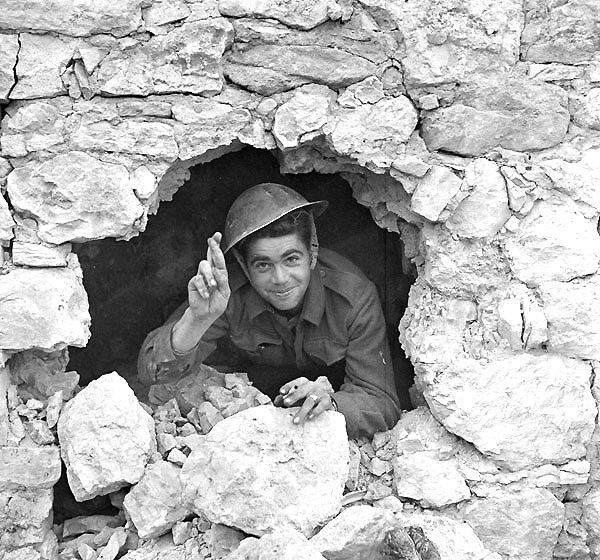
An Australian pioneer sergeant with a leather apron and axe.
An age-old military tradition has returned to the Canadian Army just a few years after it was abandoned.
Assault pioneers—long-known as the bearded, leather-aproned, axe-bearing innovators whose jobs originated with the Roman legions—are making a comeback, albeit with some modern twists.
Attached to infantry units, they have typically been responsible for manual labour and light engineering work such as road-clearing (hence, the axe) and specialized explosives work, making way for assault troops to proceed with their lethal tasks.
Usually about 10 men strong, they are the MacGyvers of the infantry units, coming up with novel solutions to unique problems or obstructions that usually impede the progress of the main body of troops.
The British army’s Royal Pioneer Corps defines the pioneer as a skilled worker who “leads the way, embraces a purpose, tough of spirit, far-sighted, and adventurous; the person who will prepare the way for an advancing army.”

A history compiled by Roland Wardle, a re-enactor pioneer in the War of 1812-era 8th Regiment of Foot, says the earliest references to combat pioneers he could find was in the Bible’s Book of Nehemiah, Chapter 4, Verses 17-18.
“They will build on the wall, and they that bear the burdens, with those that laded, everyone with one of his hands wrought in the work, and with the other hand held a weapon,” it says. “For the builders, everyone had his sword girded by his side, and so builded.”
Imbued with their own special esprit de corps, assault pioneers more typically trace their roots to ancient Rome, before full-fledged combat engineers, when the Roman legions needed advance parties to venture ahead to secure and clear the army’s advance, often under hairy conditions.

A pioneer sergeant leads The Royal Regiment of Fusiliers during a Saint George’s Day parade in Alnwick, England, on April 27, 2019. [Sergeant Donald Todd RLC]
By the 18th century, British infantry battalions were detailing sections or squads of pioneers under the command of a corporal or sergeant. Their main tasks were to perform or supervise heavy construction work.
Canadian forces fighting the First World War in Europe had at least a half-dozen pioneer battalions, including the 2nd Canadian Pioneer Battalion, Canadian Expeditionary Force, which distributed more than 1,000 men among infantry units.
The 3rd Canadian Pioneer Battalion (48th Canadians) was attached to the 3rd Canadian Division; the 67th Western Scots (Pioneer Battalion) joined the Canadian Expeditionary Force in 1916 and the 123rd Infantry Battalion was repurposed as a pioneer battalion in January 1917. It replaced the 3rd the following May as the pioneer battalion of the 3rd Canadian Division. The 124th Infantry Battalion was also repurposed and became the pioneer battalion of the 4th Canadian Division.
During the Second World War, it was assault pioneers who did the so-called “mouse-holing” in Ortona, Italy, blasting through the interior walls connecting Italian houses so combat troops could make their way up streets out of sight of waiting German snipers.

Two Canadian assault pioneers with the NATO force in Kosovo in 1999. The pioneer corps was briefly disbanded and has been reintroduced as part of efforts to make the Canadian infantry more mobile and agile. [DND]
“In theory at least, the principal distinction of the pioneer was his axe, apron and his beard, the only soldiers allowed to be unshaven in the otherwise clean-shaven army,” Wardle writes. “The wearing of the beard was a privilege, because their task was considered so arduous in warfare. Away from the regiment and the niceties of formal camp life, they were permitted facial hair.
“However, it may have reflected the simple fact that because they formed the advance party, usually setting off before dawn, shaving in the dark was hardly a practical proposition. Like so many other privileges in the army, it soon became a requirement and even today, it is expected of the regimental pioneer sergeant that he will grow a suitably impressive beard.
“In practice, however, beards were probably much more widely worn on active service than contemporary illustrations suggest.”
In British army tradition, units on parade are led by a bushy-bearded pioneer sergeant wearing his leather apron and carrying an axe over his shoulder.

Bearded assault pioneers served with the Canadian Armed Forces in Afghanistan, but in the post-Cold War era, army planners eventually deemed the job redundant and not cost-efficient, so the pioneers were disbanded and their tasks handed off to combat engineer regiments.
Captain Colton Morris, an instructor at the Canadian Army’s infantry school in Oromocto, N.B., helped design a new assault pioneer course. He told The Maple Leaf, the CAF’s newspaper, that senior leaders have since come back to the idea that pioneers are a good investment for the evolving army.

Canadian pioneers build a bunker in Croatia in 1992. [Private collection of Maj. Brian Hynes]
“Engineers and assault pioneers complement each other.”
The pioneers’ role in Afghanistan actually reaffirmed their value as the military shifted its emphasis to lighter, more mobile, and agile forces.
The former army chief, Lieutenant-General Paul Wynnyk said the “new version of the assault pioneers will assist in maintaining mobility in complex terrain.

A Canadian soldier peers through a “mouse hole” in Ortona during the Second World War.
“So that means in mountains and, particularly now, in urban environments where skills like breaching come into play,” he said. “Right now, that task is solely held by the engineers. They have to do things like fortify buildings, clear roadways, move obstructions and all sorts of other stuff. They don’t have the personnel to augment the infantry.”
The army is offering an assault pioneer course to infantry soldiers in both the regular and reserve forces.
“The intention is to increase retention,” Morris said. “By bringing the assault pioneers back, we open up other options for privates, corporals, junior leaders—and even officers—to expand their breadth of experience.”
Advertisement



















